Here's what you need to set up outdoor speakers for backyard parties
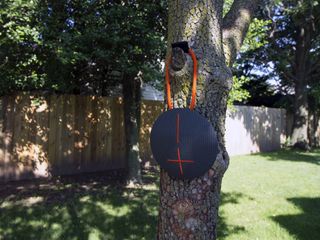
There's nothing quite like having a barbecue with your best friends on a hot summer day and listening to your favorite tunes on the patio or deck. Of course, you can't just throw any old speaker outside and hope for the best.
Setting up outdoor speakers takes a little bit of planning to accomplish; there are even multiple routes you can going to bringing your favorite sounds outside. Here are some handy tips, general knowledge, and products that will help you turn up the volume on all your backyard parties.
The Bluetooth route
Bluetooth speakers have come a long way in recent years, and if you're primarily playing music from your phone or tablet, it's a super easy way to make sure you can take your music with you. There are portable Bluetooth speakers that you can easily lug around to your backyard when you're sunbathing or grilling, but there are also Bluetooth speakers specifically meant for outdoor use that you can set up and leave in one place.
Portable Bluetooth option: UE Boom 2
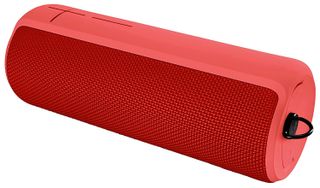
The Boom 2 has a very high water resistance rating, allowing it to be submerged in 3 feet of water for 30 minutes, meaning rain or shine your music will play just fine.
UE Boom 2's battery will last you approximately 15 hours of play time and has a Bluetooth range of 100 feet, giving you more than enough time and space to enjoy all the sounds you want to hear.
Buying two UE Boom 2's (for $199 each) gives you the option to set up both speakers as a stereo pair, meaning you'll have access to a truly portable stereo system wherever you go.
The UE Boom 2 also has the added pleasure of a controller app that you can use to skip songs, adjust volume, and pause music without having to touch the speaker at all.
Master your iPhone in minutes
iMore offers spot-on advice and guidance from our team of experts, with decades of Apple device experience to lean on. Learn more with iMore!
Non-portable Bluetooth option: Acoustic Research Pasadena
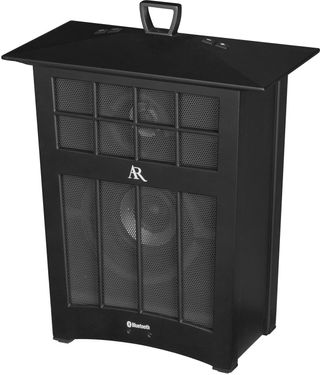
These speakers start at around $97 each and sound great on their own — and even better when paired with a second one.
They offer Bluetooth connectivity and up to 8 hours of battery life — ideal for outdoor listening — plus it's easy to store and charge them in the garage or house when not in use. There's also an auxiliary jack on the back, just in case you'd prefer a wired connection or are dealing with a device that doesn't have Bluetooth.
The best part is that you get three-way sound in a 9.5-inch-tall package. There's a front-facing 2.5-inch tweeter, a front-facing 3.5-inch mid-range, and a rear-facing 3.5-inch woofer, offering well-balanced sound, though the bass is a bit muted.
If you're looking for a solid little Bluetooth speaker that's battery-powered, provides decent sound, won't break the bank, and can even be hung from a sturdy rope or wire, then check out the AR Pasadena.
Things to keep in mind for Bluetooth speakers
The biggest problem with Bluetooth is you will eventually run out of power, meaning you'll have to remember to charge them on a pretty regular basis. If you have an outdoor outlet, I would suggest trying to keep them close to that power source for convenience. Of course, small speakers like the UE Boom 2 are easy enough to carry inside or to the garage when you're not using them, making charging less of a hassle.
The wired route
More complicated than the Bluetooth option, setting up a wired outdoor speakers takes some work. The advantage is you're not limited to playing music via your phone or tablet. You can even play your favorite vinyl records outside if you set up your system correctly.
There are few important details when it comes to wiring outdoor speakers correctly; I'll take you through a quick explanation of what a setup could look like.
Indoor Receiver
Just like an indoor audio system, you're going to need a receiver to connect all your speakers and music devices. Since receivers are typically expensive and not made to be outside, you'll need to set up your receiver indoors. There are a ton of audio receivers out there, and you may already have one that will suit your need perfectly fine. Just make sure you have the right amount of channels on your receiver to hook up all your speakers if you're planning on hooking up multiple sets.
Outdoor wire
This is probably the most complicated part of the entire process. Knowing which wire to pick is not only crucial to quality sound, it's also necessary for safety. You're going to need to drill a hole through your wall to the outside to feed your speaker wire through to the outside of your home. While it may be tempting to run your wire under a window or through a door, that is not a good idea. Not only can that damage the wire causing a bad audio signal, but it could also prove to be a safety risk.
Here's some handy information when looking at the type of wire you need for your project.
Plan your route
Before you go out and buy your audio wiring, make sure you know exactly where you want your speakers to go. Not only will this help you choose the right wire for your project, but it will also help you measure how much wire you will need.
After you measure the amount of wire you'll need, make sure you buy about 15% more than your estimate. This will help alleviate frustration if you run into obstacles on your path or ever need to move your speakers in the future.
Gauge
Speaker wire is measured in thickness by a number known as gauge. The lower the number, the thicker the wire will be and the lower the resistance of current flow.
The standard 16 gauge wire is meant for shorter runs of cable (less than 50 feet) and is probably a little too small for outdoor use. You're going to want to go with a 14 or 12 gauge wire, not only to increase the quality of the sound but also to protect the wire from the elements.
CL rating
In layman's terms, CL rating is used to determine what a wire should be used for as well as where a wire is safe to be placed.
What's important to know about CL ratings when it comes to wiring outdoor speakers is you'll need either a CL2 or CL3 rated wire because they are safe to use in walls.
Burial rating
If you want to run your speaker wires underground, you'll need a wire that's rated for direct burial. You may not need to run your speaker wire underground if you have a deck or a patio, but if you do, you'll need to make sure the wire is rated for burial.
Non-burial wire: GearIT 14 gauge CL2 speaker wire

If you don't need to bury your wire at all, GearIT 14 gauge CL2 speaker wire will work perfectly for setting up your outdoor speakers.
The CL2 rating means it's safe to go through your wall and the 14 gauge size means it will be suitable for long distances.
You can pick up this wire in lengths of 50, 100, 250, or 500 feet.
Burial rated wire: GearIT 12 gauge CL3 direct burial speaker wire
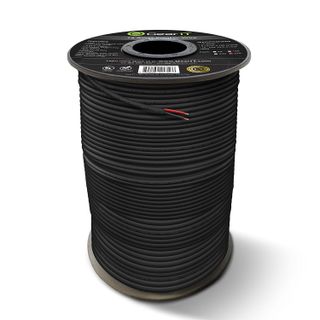
If you plan on burying your speaker wire, going with the thicker 12 gauge and the higher CL3 rating will give you the extra protection you need to ensure all your audio sounds excellent.
You can pick up this wire in lengths of 50, 100, 250, or 500 feet.
Wired outdoor speakers
There are plenty of outdoor wired speakers to chose from and depending on your style, where you want to place the speakers, and if you want to bury your speaker wire or not. If you're looking for great outdoor speakers you can use in your backyard, here's a great option.
Bose Free Space 51
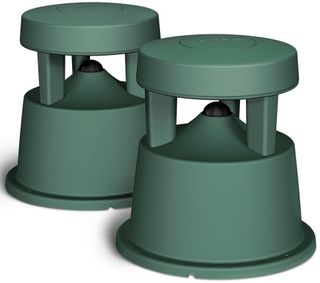
If we're talking about the best speakers of any sort, then it'd be a sin not to mention Bose in some capacity. In this case, they truly are some of the best outdoor speakers money can buy.
In true Bose fashion, these are not wireless, but once you do wire them in outside, you can set them and forget them; these speakers are designed to withstand temperatures from -40 to 150 degrees Fahrenheit. One of their neatest features is that they can be in or on-ground speakers, so you can bury them up to a certain point and still receive top-of-the-line sound quality.
Bose is all about room-filling sound, and when there's no room to fill, these still provide immersive, 360-degree sound, thanks to their radial design. They are quite pricy, starting around $450 for a pair, but with outdoor speakers, you certainly get what you pay for.
If you want high-quality sound with rich bass tones, a present mid-range, and crisp-but-not-shrill highs, then Bose is the way to go — so long as you don't mind doing some outdoor wiring.
Don't risk your life; consult a professional
I'm not a certified electrician, and this article is not a step-by-step guide on how to wire your outdoor speakers. While I have given you essential information to make informed decisions, if you have any questions at all or are nervous about undertaking a project like this on yourself, consult a professional before starting.
While I agree that an outdoor speaker system is an awesome way to make your backyard parties even more enjoyable, it's not worth putting your life or your house at risk.
How did you setup your outdoor speakers?
Did you choose a wired connection or use Bluetooth for your outdoor speaker needs? What was your experience setting up your sound system? Do you have any useful tips for others?
Share your experience with the community by leaving a comment down below.
Most Popular




